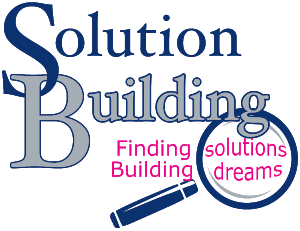Gene’s Excited About His Meeting with John
As usual, Gene had been on the go, nonstop, trying to keep construction projects moving forward, collecting money, paying bills, and meeting with new potential customers when he realized he still had six projects needing proposals. As he thought about this, he realized it had been more than two weeks since he had talked with John about how he did construction proposals.

It’s so easy in business to get caught up in fighting daily fires.
Gene picked up the phone and dialed John’s number. “Hey John, this is Gene, have you got a few minutes?” “Sure,” John said, “What can I do for you?” “I just realized that I’ve got six projects that need priced, this reminded me of our conversation a few weeks back, when you offered to go through your bidding process with me. Does that offer still stand?”
“Sure,” said John, “when would you like to meet?” Gene thought for a minute, realizing he wasn’t sure when he would have time to squeeze in anything else. “I don’t know John, as usual, I’m booked pretty full.” John waited for a minute and then said, “I understand. Think back to what you said in our previous conversation. Do you remember how frustrated you were?”
“Your situation isn’t going to change until YOU decide to change it.”
Gene rubbed his forehead. He knew John was right. “Okay”, Gene said, “I can probably squeeze in an hour or maybe two Saturday. Would that work?” John shook his head and smiled, remembering what it was like to be where Gene is.

Then he said, “Gene, I appreciate where you are, but the process of getting from where you are, to where I am, isn’t going to happen in an hour or two. I’ve been doing it for forty years. If you can commit to four hours Saturday, I will be glad to meet with you and we can start the process.”
“YOU are the only one that has the power to make this change.”
Gene sat there with all the things that needed to be done, bouncing around in his head. Then he thought about how tired he was of feeling out of control. Once again, he knew his mentor was right. John had taught him so much about construction and how to build things.
Now it was time to learn about the business part of construction.
“Okay,” said Gene, “How about we meet at noon on Saturday, and I’ll bring the pizza.” John said, “That sounds great, and we can get started, but that’s all this meeting will be…getting started. Like I said before I’ve being doing this for years. It takes work, it takes commitment, but the end result is worth it.”
“It’s more than just learning. It’s a lifestyle change.”
“Gene, most people in construction never learn the business side of operating a company. This is where they struggle until they get to a point where they give up. Bring an open mind and an open heart and be ready to have them both filled.”
“Nothing is going to change until something gets done”

Now Gene was getting excited and looking forward to meeting with his friend and mentor and making some changes in his business and his life. He was beginning to realize that a construction project started out right, begins long before any actual construction takes place.
It takes the right tools, training, and action to build a successful construction business. It requires you to do more than just talk about it.
If you or someone you know is feeling out of control like Gene, there are tools and training available to help get control of the business. The Business BUILDing Toolbox is filled with construction business tools.
If you would like to dive into the Blueprint for Building a Better Proposal, we’re hosting a free 90-minute workshop for Building a Better Proposal on Saturday, January 6, 2024, at 10:30 CST. Register for the workshop here.
If you have questions about the workshop or business systems, you can schedule a free 30-minute construction company consultation here.








































